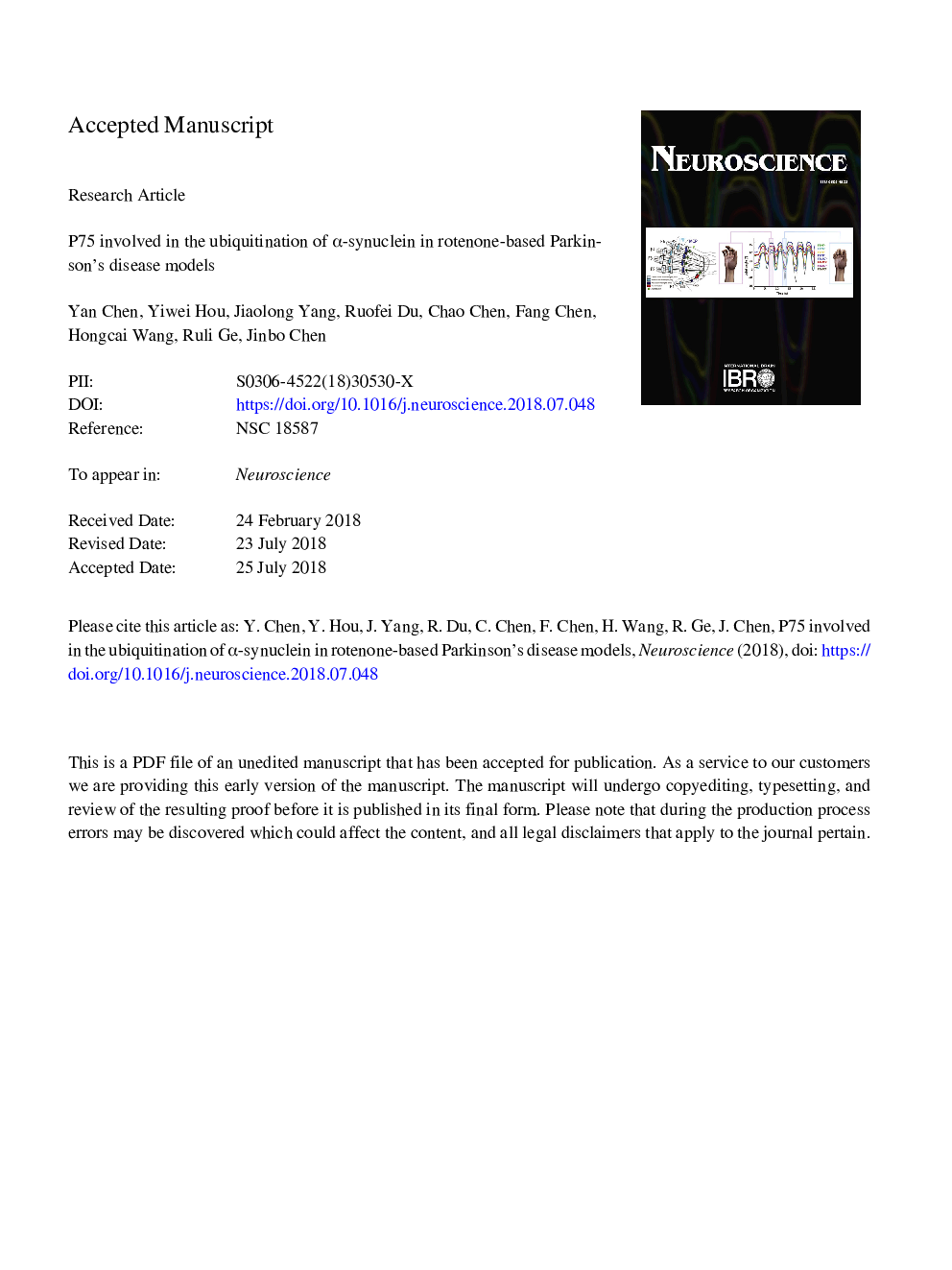| Article ID | Journal | Published Year | Pages | File Type |
|---|---|---|---|---|
| 8840554 | Neuroscience | 2018 | 25 Pages |
Abstract
For Parkinson's disease (PD), the regulatory mechanism of α-synuclein (α-syn) aggregation remains to be clarified. Ubiquitination modification is crucial for α-syn aggregation, with implications for Lewy body formation. Besides, ubiquitin ligase absentia homolog (siAH) is involved in the ubiquitination of α-syn. We investigated whether the p75 receptor can act as a potential regulator of α-syn accumulation through ubiquitination. Western blot, immunoprecipitation, gene transfection, and RNA interference technology were employed to detect the effect of p75 in in vivo and in vitro models. In a rotenone-based stereotactic (ST) infusion in vivo model of PD, p75 receptor and siAH expression was increased significantly compared with the control group. In cellular models of rotenone-mediated neurotoxicity, the interactions between p75 and siAH were revealed by immunoprecipitation; the colocalization of p75 with α-syn was observed in the cytoplasm; p75 promoted nuclear expression of NF-κB (p65), which might interact with the promoter of the siAH gene. Moreover, siRNA-mediated p75 depletion reduced the upregulation of α-syn and nuclear expression of p65 and protected against cell apoptosis induced by rotenone. Thus, aberrant expression of p75 may regulate the increased expression of α-syn, which is related to siAH-mediated ubiquitination and nuclear expression of p65.
Related Topics
Life Sciences
Neuroscience
Neuroscience (General)
Authors
Yan Chen, Yiwei Hou, Jiaolong Yang, Ruofei Du, Chao Chen, Fang Chen, Hongcai Wang, Ruli Ge, Jinbo Chen,
